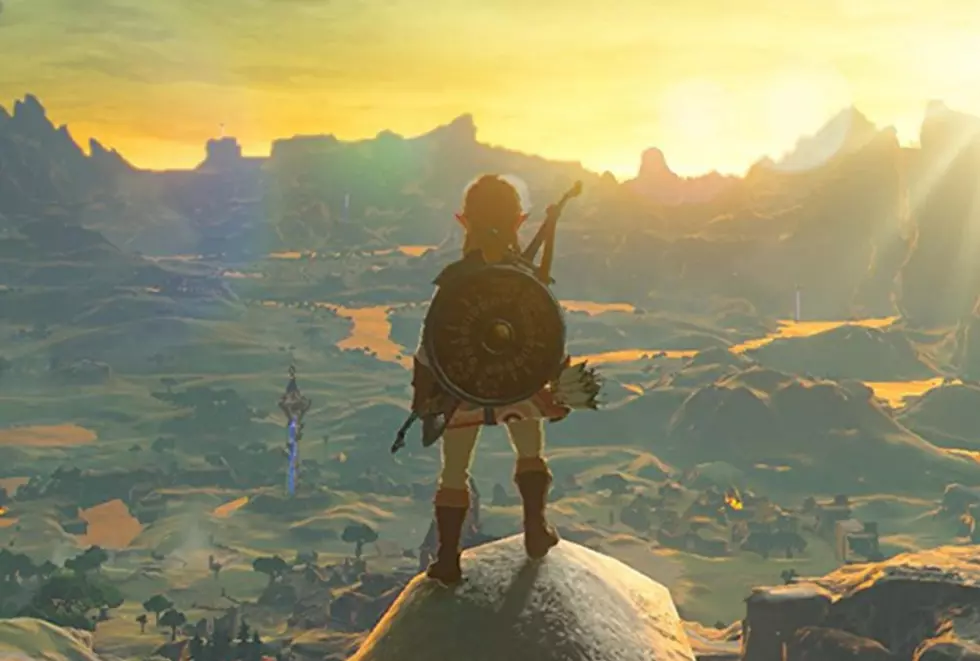
The Legend of Zelda: Breath of the Wild Review (Nintendo Switch)
When it comes to the history of action-adventure gaming, The Legend of Zelda has almost always had a chapter in each generation that added something uniquely its own to the conversation. That addition has fluctuated over the years, but one thing Zelda was always supposed to convey was the sense of innovation in the approach to capturing the magic of a journey. Enter 2017’s Breath of the Wild: a closing chapter to the Wii U and opening volley of the Nintendo Switch. Breath of the Wild is perhaps the most extraordinary game out of any in the Zelda series leading up to it. Most Zelda games break the mold or set the pace for what we should expect out of adventure games. Instead, Breath of the Wild breaks the mold and sets the pace for what we should expect out of Zelda games, and though it doesn’t always strike true, it still makes for one of the most gripping and amusing adventure titles we’ve ever played.
Breath of the Wild begins with our hero awaking from an ancient slumber to the whispered calls of Princess Zelda. It isn’t long before Link discovers a device known as a Sheikah Slate which is able to interact with various ancient consoles. With little more than a flimsy shirt, trousers, and the Sheikah Slate, Link follows the voice from his resting place into the titular wilds. Slowly, the game guides players into the common Legend of Zelda quest to reunite with his ally, Princess Zelda, and defeat a new rising threat from his ancient adversary, this time presented as Calamity Ganon whose evil presence looms in the distance over Hyrule Castle in the center of the land.
Though Breath of the Wild provides a main quest with some structured direction, events and waypoints to let you know the way to go, it is truly unparalleled in the amount of freedom the player is given. From the moment you leave the first cave, you have the option to go take Link where you please and do as you please. Jump at nearly any vertical surface and you can start to climb it. Jump in any deep water and you can swim through it. The only restriction is a stamina bar that drains as you sprint, climb, or swim and though the bar can drain fast at first, there are mounds of ways to approach any geographical obstacle and overcome it if you have the tenacity to do so. The level of access from jumpstreet only grows and it repeatedly sets Breath of the Wild apart from other open-world games in just how much you can do with what you have if you can think up a solution.
The world is vast and varied in Breath of the Wild as well. You’ll go through a whole gauntlet of initial tasks in a seemingly huge area before you unlock access to rest of the world. It’s sort of amazing to come to the realization that you essentially played a tutorial in a fragment of an incredibly expansive world and journey. Meanwhile, volcanoes, floating islands, and the corrupted Hyrule Castle remain constant visible fixtures in the distance, always reminding you of how small you are in this world and how much there is to see. Breath of the Wild handles vast spaces incredibly well. The massive landmarks that you see in the distance are often things that you will eventually approach, and the game does great at making a distant mountain seem majestic from far away and breathtaking up close --- especially when you’re standing on top of the highest peak.
As with any Zelda game, you’re not simply reliant upon Link’s own body to do the job. The world is lush with weapons, tools and collectibles to help Link on his way. For instance, Link collects some early additions to the Sheikah Slate that allow him to interact with the world differently, such as Magnetism to move metal objects and Cryosis to create blocks of ice in water. Perhaps the most interesting of these is the Stasis, which allows Link to freeze an object in place, deactivating its functions for a time and allowing Link to hit it and send it flying once the Stasis spell deactivates. Each of the Sheikah abilities make for some interesting puzzle solving throughout the journey and the game invites you to play with the extent to which each can be used in any given situation.
The place where this Zelda’s items differ from others is in permanence. Outside of the Sheikah Slate abilities and the game's armor sets, nearly everything Link collects is temporary. Even the most solid looking of weapons and shields will eventually break. Meanwhile, constantly foraging plants, small animals and various monster parts are key to allowing Link to cook food and potions to restore his health and grant him certain status effects, such as protection against deadly high or low temperature environments. It makes for an engaging survival aspect that continually keeps you looking out for cooking components you’ll need later, or a convenient replacement for when your temporary favorite weapon or shield breaks. What’s best is that this is done mostly without making collecting and crafting feel like a chore. Generally speaking, your needs will dictate your collection and you’ll find most stuff in the natural progression of the game without anything constantly demanding you stop to collect in order to continue your journey.
Though a grand majority of Breath of the Wild takes place outside, there are dozens of shrines and a few somewhat traditional Zelda dungeons to explore. Each has its own rewards, though only a handful are required to progress through the game. The boon of any shrine is that they always contain chests with good equipment, and passing enough shrines allows you to increase health. Towers also exist in various regions and if you can reach them, they’ll map out the section you’re in for you. In each of these events, the puzzles leading to the prizes are often amusing and creative. They generally use your own movement abilities and Sheikah Slate powers in various mixtures and context to produce interesting results. There were hardly any puzzles that didn’t produce enjoyable engagement and accomplishment when we found the solutions.
Breath of the Wild is also chock full of lush and interesting characters, both evil and good. Your standard Moblins, skeletons, bat-like Keese, and the like make appearances and various enemy camps exist across the world, challenging Link to overtake them for a chance at some useful gear. Even greater threats exist for the finding in the wild as well, presenting dangerous challenges that can lead to great treasures. Meanwhile, various friendly faces exist in the form of traveling characters and bastions of civilizations. Villages, businesses, and cities sport genuinely lush and robust lives with all sorts of routines and opportunities worth exploring for any interested player. One of our easy favorites definitely had to be Kass: a bird-like man of the Rito race and traveling musician found repeatedly throughout the world that offers Link a friendly recourse from the vicious wild alongside various riddles and help by way of music and world lore.
On that note, much as we could sing the praises of Breath of the Wild all day, it’s not without some problems and frustrations. In a world this vast with so much opportunity for experimentation, crazy things are bound to happen. Unfortunately, sometimes so much context for mobility is weaved into such small spaces that they sometimes clash with one another. The game does its best and handles many of these scenarios admirably, but it was still frustrating to be facing down an enemy when suddenly we would move too close to a tree and start climbing, breaking target lock on an enemy and leaving us open to attack. There were also some framerate issues at certain points. Nothing constant, but looking around while aiming a bow or riding a horse produced brief bouts of framerate drop that hurt the overall immersion from time to time.
Then there’s the weather; specifically rain. Breath of the Wild has a constant shifting system of day, night, sunny, cloudy, and raining occurrences that make for a more realistic and immersive wild and generally this is a good thing. If you’re in for a time of day or weather that you don’t care for, you can start a fire and sit by it or go to town inn to pass time. Unfortunately, rain is almost always oppressive to deal with out in the wilderness. For one, any fire-based situation or puzzle that you find or need in the wild can’t be solved while it’s raining. Even worse, your hands and feet get slippery in the rain, so climbing is practically impossible. There are a lot of obstacles in Breath of the Wild, but rain held us back from progressing more than any monster or puzzle-solving. It wouldn’t have been so bad if the ability to move time forward in the wild didn’t depend on fire being available, but as it stands, rain creates a buffer to progression that simply clashes with too many of the game’s other tools and systems.
The Legend of Zelda: Breath of the Wild is different in a lot of good ways. It’s good to see Nintendo take so many chances with their flagship adventure series. This is a game that takes a ton of conventions from contemporary open-world adventures and survival games and embeds them deeply with the Zelda magic that has continued to make this series a pinnacle of its genre. There is almost nothing without purpose in Breath of the Wild’s world and it is easy to get lost for hours on end without ever advancing the story. Even so, it helps that the narrative holds up as well, providing another meaningful journey for the Hylian hero and heroine. Breath of the Wild is by no means perfect, but when you’ve got a game that rewards every kind of exploration with a new wrinkle, it might not have to be.
This review was completed with a purchased copy of The Legend of Zelda: Breath of the Wild for the Nintendo Switch.
More From K-Fox 95.5










